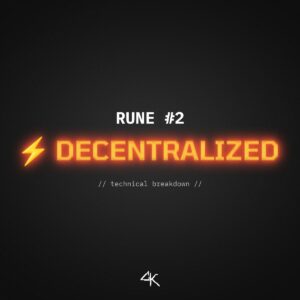How Non-Fungible Tokens Challenge Traditional Supply and Demand Principles
3 min read
Oh, Rosen, and Zhang created and tested a predictive framework for understanding NFTs on the basis of the same bimodal demand at work in luxury markets, where a product is either “in” or “out.” They looked at data from OpenSea, the biggest NFT and crypto-collectibles marketplace globally, analyzing more than 6 million NFT transactions, including sales of BAYC, between March 2021 and March 2022.
With newly minted NFT collections, the researchers observe that there was either a rush to buy or items failed to sell—and in which case, issuers ended up selling less than 20 percent of their inventory. This posited something of a tightrope for them in terms of pricing, creating the wrinkle that differentiates the NFT market from luxury goods.
Too high a price or too much supply and demand dropped. And if demand dropped, a collection risked no longer being “in.”
“NFT issuers have to be intentional about underpricing their collections and keeping supply deliberately low, even if demand skyrockets when the collections come out. Any attempt to increase prices could reduce demand. And if demand drops, buyers might conclude the collection is ‘out’ and walk away from it altogether—making it a kind of self-fulfilling cycle in which revenues collapse,” Zhang says.
Because NFTs are strategically underpriced and supply is restricted, the market is prone to another peculiarity—one that is common to luxury markets: flipping for profit.
Zhang, Oh, and Rosen find that certain buyers purchased NFTs in high-demand, low-stock collections at low prices only to sell them at higher prices in secondary markets. This worked because inventory restrictions meant there were willing buyers who couldn’t get hold of a Bored Ape, say, at issuance. And demand wasn’t fragile because the collection was de facto “in” since it had already sold out.
The researchers find that a small set of investors—2.4 percent of wallets were responsible for 50 percent of all transactions in secondary NFT markets—were shrewdly targeting collections that were likely to succeed by entering new mints relatively late, and only when the collection had already picked up substantial sales momentum. These scalpers were exploiting the underpricing strategy in primary markets by flipping “in” collectibles for profit, says Zhang, although the “real winners” in NFT markets remained the issuers.
“It’s tempting to assume that NFT issuers underprice their collections at issuance out of ignorance or error, leaving room for scalpers to make a fast profit at their expense. od=”nofollow” target=”_blank” current crypto crash? The Bitcoin and NFT markets were substantially down in market capitalization at the end of 2023, after the collapse of crypto exchange FTX and other major players. How NFTs will navigate future growth may hinge on their integration with the traditional luxury market, says Zhang.
“A lot of our lives are moving online, so there might be a future in which you want to invest in a digital signature of ownership or a souvenir for your Blockchain wallet tied to your luxury purchase.”
Whether that is a cartoon ape clutching a Hermès bag or brandishing a Rolex remains to be seen.
Source link
#NFTs #Defy #Laws #Supply #Demand





